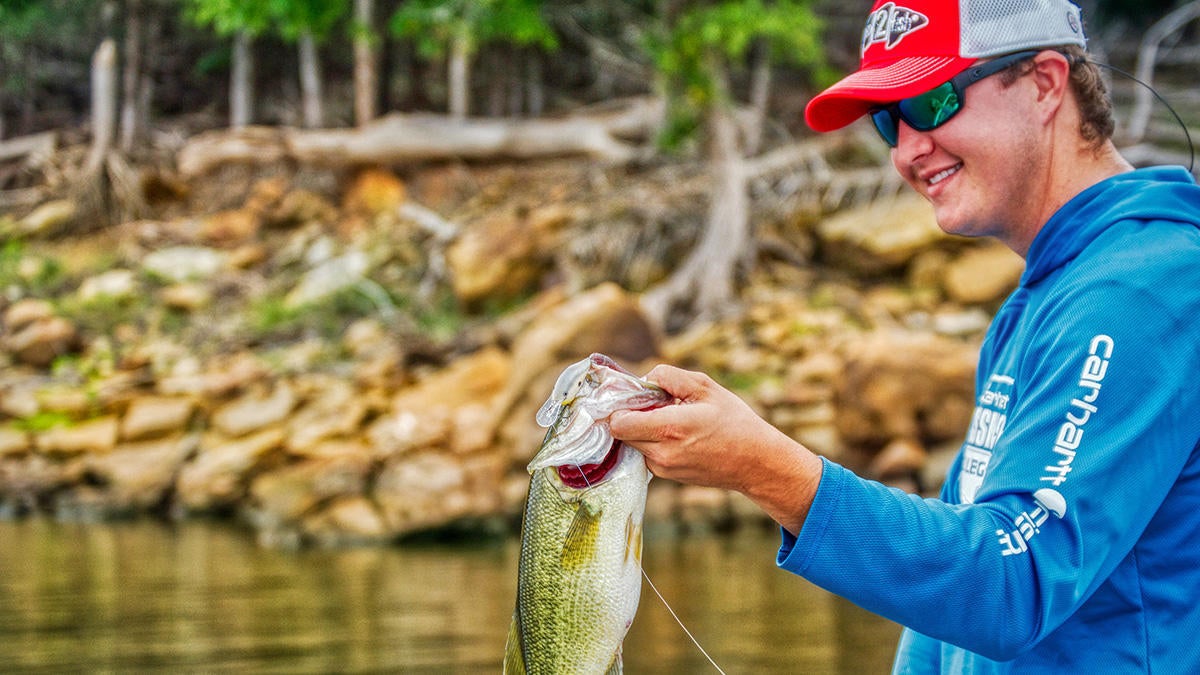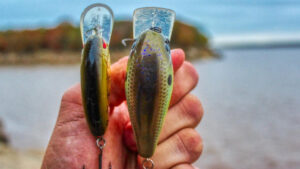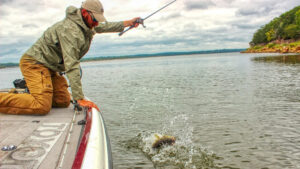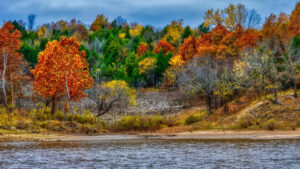It’s hard to discuss fall bass fishing without talking about crankbaits. No matter what part of the country you fish, probability says you’ll have at least one crankbait ready in autumn months. If you don’t, you probably should. As these small diving plugs are straight up fish catchers when bass ramp up their feeding in the fall.
But not all crankbaits apply the same. In fact, more variation exists amongst these lures than any other bait category in a bass fisherman’s repertoire. Understanding the nuances between different styles of crankbaits and what style most efficiently covers the given conditions will lead you to more bass this fall.
Understand crankbait action
The first step in choosing the “right” crankbait for a day of bass fishing is understanding what kind of action the crankbait has underwater and how these different actions are better suited for different conditions. The bill produces most of a crankbait’s action, as well as the shape of the body.
With as many crankbaits as are available to anglers nowadays, exceptions exist. But generally speaking, these tips will give you a good indication of the type of movement a crankbait exhibits.
Bill shape
You can usually discern the action of a crankbait by simply looking at the shape of its bill. Crankbaits with a narrow bill commonly have a tighter wobble as they swim through the water. This subtle movement is fitting in a lot of situations, but especially when you are faced with clear water or colder water.
Conversely, a crankbait with a wide bill produces a wider wobble and puts off more displacement in the water. This action is ideal anytime you have stained to dirty water, or when the water temperatures are warm and bass are aggressive.
Body shape
The shape of a crankbait’s body is another visual clue that’ll help you anticipate its swimming action. Fat bodied crankbaits typically have aggressive hunting actions.
While flat sided crankbaits correspond with a tighter swimming action with less vibration. Crankbaits with slender bodies or flat sides are suitable in a plethora of scenarios. Similar to plugs with narrow-bills, flat sided crankbaits are opportune on calm cloudless days, in cold and clear water scenarios, or when you’re on a lake with high fishing pressure.
Subtle fall fishing rewards
During the fall, bass notoriously migrate to shallow water to voraciously attack shad, crawfish and other forage. As someone who grew up in central Illinois and now lives in Oklahoma, I welcome this transition every year.
There are still bass to be caught on deep diving crankbaits and other offshore presentations, but I am a bank beater at heart. Covering water on the shoreline and in the backs of pockets is where I’m most comfortable, and fall is one of the best times of the year to exploit these tactics.
The past 4-5 years, I’ve found myself using somewhat subtle, mid-mid-depth crankbaits to cover water in the fall, more so than crankbaits with an aggressive action. Baits like a Spro Little John MD, a Strike King KVD 1.5 Flat Side, or Rapala’s DT Series have out-produced traditional square bills and other more intrusive plugs for me. This has far more to do with the action of these crankbaits than the diving depth.
Seasoned professional angler and self-proclaimed crank-a-holic Gerald Swindle offered his insight on this topic at Table Rock this past week.
“Subtle crankbaits work best in the fall because you usually deal with clearer water,” Swindle said. “Reservoirs are drawn down, and we don’t get rain this time of the year like we see in the spring. So typically you see relatively clear water, and a tighter-wobbling crankbait will get more bites than a wide-wobbling crankbait. A Rapala DT 6 is my all time favorite plug in the fall. No doubt about it.”
This is why you see a lot of anglers employing some of the same crankbaits in the fall as they do in late winter or early spring. The difference is you don’t have to use a painfully slow retrieve with these plugs in the fall like you would during the winter. Bass are extremely active throughout autumn and very willing to chase down a meal.
This is not to say squarebills and other wide-wobbling crankbaits won’t work in the fall. In fact, the fall months can be terrific for squarebilling, but you have to have the conditions that call for it. If you are on a fishery that has stained or dirty water, a crankbait like a Strike King KVD 1.5 or a Bagley Balsa B Squarebill can prove extremely productive. Or if you have a day when the wind is howling, an aggressive crankbait with a loud rattle very well may be the best option.
While subtle crankbaits may be more applicable in the fall in many circumstances, no single crankbait is “the best” for fall fishing. The style of crankbait you choose to fish with should be based upon the water clarity and given conditions you have for that day. Factoring these details into your lure decisions can mean the difference between a few bites or a banner day for your own crankbait record books.
















